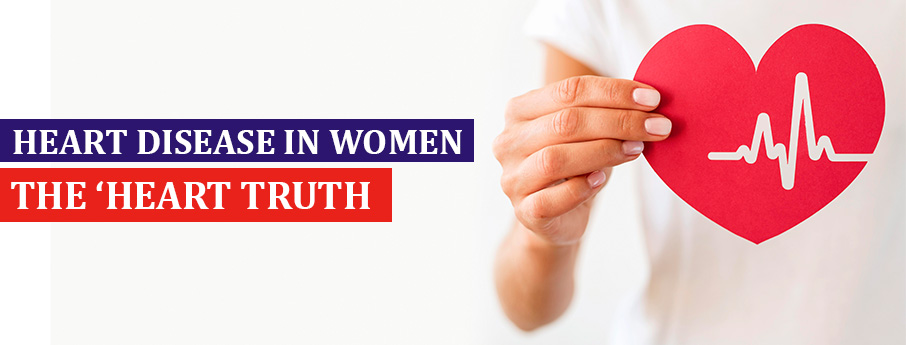
Cardiovascular diseases especially coronary heart disease (CHD) are epidemic in India. The last six decades have witnessed increasing trends in the prevalence of CHD in India. The risk factors are:
- Dyslipidemias
- Smoking
- Diabetes
- Hypertension
- Abdominal obesity
- Psychosocial stress
- Unhealthy diet
- Physical inactivity
- Unusual Fatigue : Women perform household chores on regular basis the resultant feeling of tiredness may be normal. But fatigue due to heart ailment will generally be recent or more dramatic in onset and:
- Will make one suddenly worn out after typical exercise routine or general activities of daily living.
- Is associated with a “heavy chest”.
- Can lead to sleep disturbance.
- Sweating and / or shortness of Breath : As women age, a lack of exercise and gradual weight gain can cause symptoms of shortness of breath. Hot flushes are a common complaint for many women during menopause.But these symptoms can signal a heart problem when they happen in certain situations:
- Sudden sweating or shortness of breath without exertion.
- Breathlessness that continues to worsen over time after exertion.
- Shortness of breath that worsens when lying down and improves when in propped up position
- “Stress” sweat (cold, clammy feeling) when there is no real cause for stress
- Sweating or shortness of breath accompanied by other symptoms such as chest pain or fatigue
- Neck, Jaw, Back Pain : As intricate as our body’s systems are, they are very adept in giving distress signals .When there is a problem with the heart, it triggers nerves in that area and the resultant pain is felt at adjacent sites as well.Moderate to intense pain in the jaw, back or arms may signal coronary insufficiency. If the discomfort begins or worsens on exertion and lessens or recedes at rest, it calls for prompt medical attention.
- Women, in particular, can have pain in either arm, not just the left one like men.
- Pain in the lower or upper back often starts in the chest and spreads to these areas especially left lower side of jaw.
- The pain is sometimes sudden, may not be on exertion, and may arouse one from sleep.
What to do if you notice Symptoms ?
Women often say that they noticed these three warning signs weeks to months before a heart attack. Hence timely medical checkup can prevent one from a full blown heart attack. When you consult your doctor:- Narrate your symptoms and when they are occurring.
- Let him or her know about any related family history.
- Talk about stress or anything going on in your life that might contribute to a problem.
When to call for medical aid ?
Get help if you have chest pain or discomfort along with any of these symptoms especially if they last longer than 5-10 minutes:
- Pain or discomfort in other areas of the upper body , including the arms, left shoulder, back, neck, jaw, or stomach (up to the navel)
- Difficult breathing or shortness of breath
- Sweating or “cold sweats”
- Fullness, indigestion or choking feeling (may feel like heartburn)
- Nausea or vomiting
- Light-headedness, dizziness, extreme weakness or anxiety
- Rapid or irregular heartbeats

